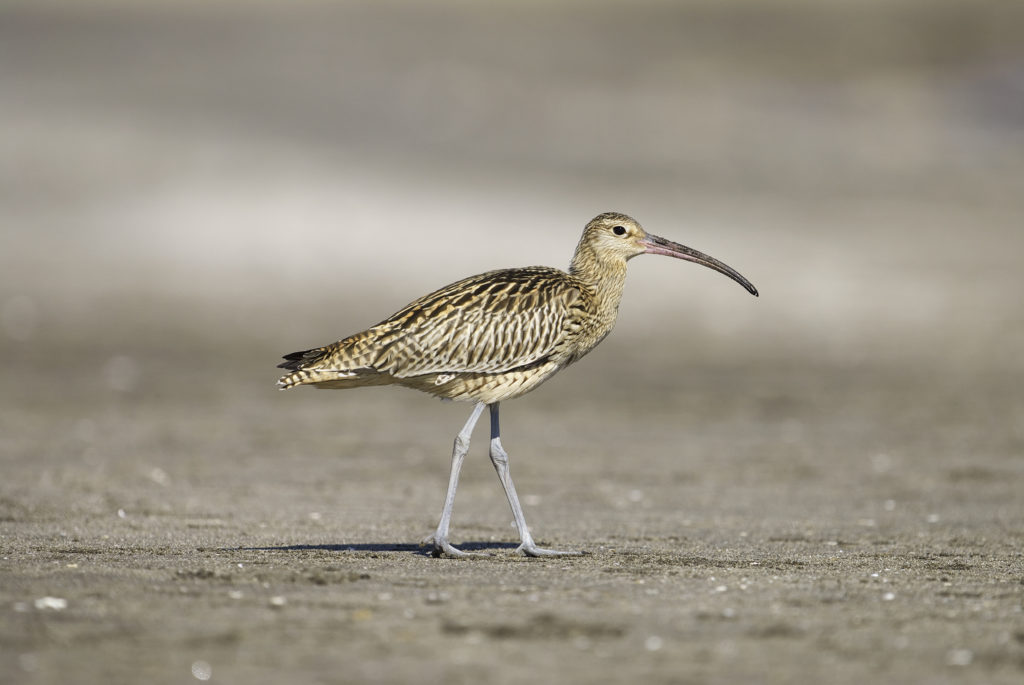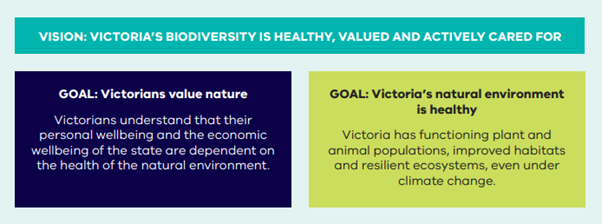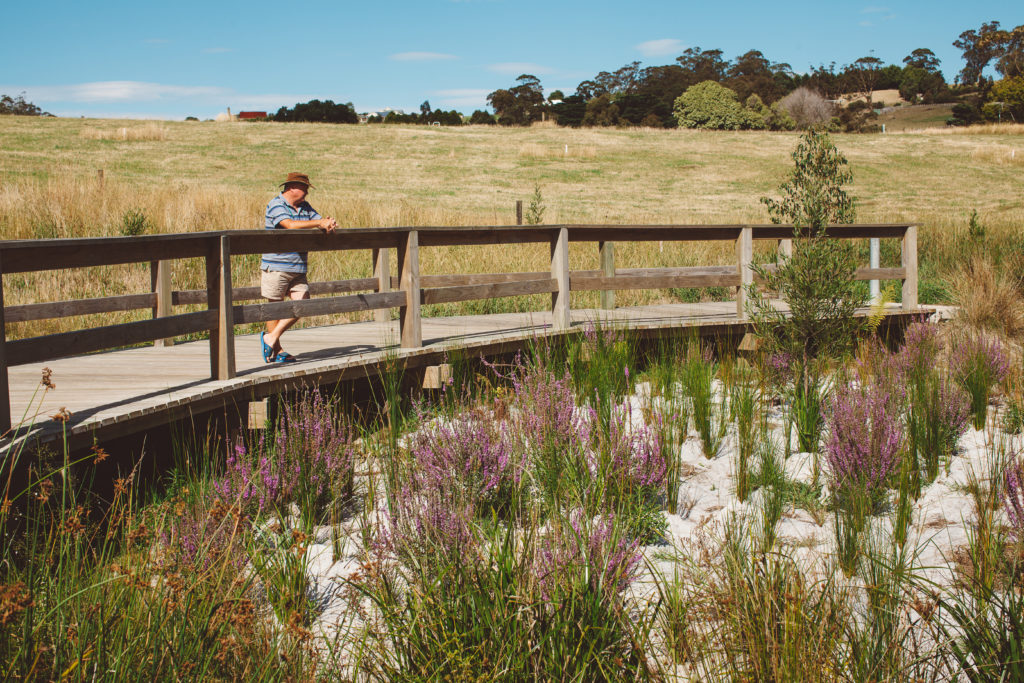Biodiversity Policy Context
International
International treaties, conventions and agreements
The global conservation and ecologically sustainable use of biological diversity is also an issue requiring effective international cooperation. Australia participates in development and implementation of many international agreements dealing with the environmental and biodiversity conservation and sustainable use. These include global and regional conventions and treaties and bilateral agreements as outlined below:
Conventions
- UN Convention on Biological Diversity
- Convention on International Trade in Endangered Species of Wild Flora and Fauna
- Convention on Migratory Species
- International Whaling Commission
- Ramsar Convention on Wetlands
- UN Framework Convention on Climate Change
Agreements
- Agreement on the Conservation of Albatrosses and Petrels
- Agreement between the Government of Australia and the Government of the People’s Republic of China for the Protection of Migratory Birds and their Environment (CAMBA)
- Agreement between the Government of Australia and the Government of Japan for the Protection of Migratory Birds in Danger of Extinction and their Environment (JAMBA)
- Agreement between the Government of Australia and the Government of the Republic of Korea on the Protection of Migratory Birds (ROKAMBA)
Australia
Environment Protection and Biodiversity Conservation Act 1999
The Federal Environment Protection and Biodiversity Conservation Act 1999 (EPBC Act), identifies ‘matters of national environmental significance’, (MNES) including Ramsar wetlands, threatened species and ecological communities.
Matters of national environmental significance are important to all Australians and, given the interconnectedness of the global biosphere, internationally as well. The EPBC Act aims to balance the protection of these crucial environmental and cultural values with our society’s economic and social needs by creating a legal framework and decision-making process based on the guiding principles of ecologically sustainable development.
The objectives of the EPBC Act are to:
- Provide for the protection of the environment, especially matters of national environmental significance
- Conserve Australian biodiversity
- Provide a streamlined national environmental assessment and approvals process
- Enhance the protection and management of important natural and cultural places
- Control the international movement of plants and animals (wildlife), wildlife specimens and products made or derived from wildlife
- Promote ecologically sustainable development through the conservation and ecologically sustainable use of natural resources
- Recognise the role of Indigenous people in the conservation and ecologically sustainable use of Australia’s biodiversity
- Promote the use of Indigenous peoples’ knowledge of biodiversity with the involvement of, and in cooperation with, the owners of the knowledge.
If an action is likely to have a significant impact on a MNES, it must be referred to the Department of Agriculture, Water and Environment under this Act, to determine if it can proceed.
The West Gippsland region includes:
- The Gippsland Lakes and Corner Inlet Ramsar wetlands
- Recorded sightings of over 95 threatened species and a number of threatened ecological communities listed under the EPBC Act, including 12 of the Australian Government’s 100 priority threatened species.
National Biodiversity Strategy and supporting strategies
Australia’s Strategy for Nature 2019-2030, is the overarching framework for all national, state and territory and local strategies, legislation, policies and actions that target nature. The strategy builds on previous and existing work, and is underpinned by science. However, it also takes an approach that is new and very different from that taken previously. It moves away from a purely protection-based approach and strives to incorporate adaptation, resilience and natural resource management in our cities, rural and natural environments, on land and at sea.
The strategy has three priority focus areas, or goals, underpinned by twelve objectives.
The goals are as follows:
Goal 1 – Connect all Australians with nature
Goal 2 – Care for nature in all its diversity
Goal 3 – Share and build knowledge.
The goals work together in continuous loops designed to reinforce each other. By connecting people with nature, we enhance their desire to care for nature, which in turn builds knowledge that can be shared to improve our care for nature and the benefits we receive from connecting with nature. Each objective has a number of progress measures, which will be used to track and report on the success of the Strategy.
The Threatened Species Strategy 2021-2026, sets the Australian Government’s forward plan for action to protect and recover Australia’s threatened plants, animals and ecological communities, and includes:
- A ten year vision ‘Australia’s threatened species are valued, protected and on the path to recovery’
- Two high level objectives to improve the trajectory of priority threatened species and improve the condition of priority places by 2031
- Six prioritisation principles to select priority species and places, based on risk of extinction, multiple benefits, feasibility and effectiveness, importance to people, uniqueness and representativeness
- Eight key action areas, including both on-ground and supporting actions, that are fundamental to the recovery of threatened species and where the Australian Government can make a difference.
The Strategy has introduced new elements:
- Broadening the priority species to include reptiles, frogs, insects and fish
- A new focus on ‘priority places’ to expand the new Strategy’s influence across our land and seascapes
- Expanding the number of key action areas to focus Australian Government efforts to landscape-scale actions that are fundamental to the recovery of threatened species
- Other focus areas include improving habitat to support species recovery, planning and coordinating action at the right scale, and forging stronger partnerships to use our collective expertise and resources to their best effect.
The Threatened Species Strategy will be underpinned by consecutive five year Action Plans. These will be published as addendums to the Strategy. The first will be released in the second half of 2021. The Australian Government has identified 100 priority species to help focus the efforts of the Australian Government and partners on threatened species recovery actions. The Victorian Biodiversity Atlas records show that 12 of the 100 species have been recorded in the West Gippsland region, this includes the following:
| COMMON NAME | SCIENTIFIC NAME | GROUP | EPBC ACT STATUS |
|---|---|---|---|
| Australasian Bittern | Botaurus poiciloptilus | Bird | Critically Endangered |
| Eastern Curlew | Numenius madagascariensis | Bird | Critically Endangered |
| Giant Gippsland Earthworm | Megascolides australis | Invertebrate | Vulnerable |
| Growling Grass Frog | Litoria raniformis | Amphibian | Vulnerable |
| Hooded Plover | Thinornis cucullatus | Amphibian | Vulnerable |
| Leadbeater’s Possum | Gymnobelideus leadbeateri | Mammal | Critically Endangered |
| New Holland Mouse | Pseudomys novaehollandiae | Mammal | Vulnerable |
| Orange-bellied Parrot | Neophema chrysogaster | Bird | Critically Endangered |
| Plains-wanderer* | Pedionomus torquatus | Bird | Critically Endangered |
| Red-tailed Black-Cockatoo (south-eastern)* | Calyptorhynchus banksii graptogyne | Bird | Endangered |
| Regent Honeyeater | Anthochaera phrygia | Bird | Critically Endangered |
| Swift Parrot | Lathamus discolor | Bird | Critically Endangered |
*The Victorian Biodiversity Atlas holds records of less than five sightings for these species in the West Gippsland region.*
Other supporting strategies and programs include:
Australian Pest Animal Strategy – provides national guidance on best practice vertebrate pest animal management, in striving towards the national vision of protecting Australia’s economy, environment and social wellbeing from the impact of pest animals.
Australian Weed Strategy – provides national guidance on best practice weed management by guiding coordination of effort across all jurisdictions and affected stakeholders and to inform plans and actions by state and territory governments, local governments, regional natural resource management (NRM) agencies, as well as by industry, landholders and the wider community.
The National Landcare Program – is the Australian Government’s commitment to working in partnership with governments, industry, Indigenous and local communities and individuals to protect and conserve Australia’s water, soil, plants, animals and ecosystems, as well as support the productive and sustainable use of these valuable resources.
Victoria
Flora and Fauna Guarantee Act 1988
The Flora and Fauna Guarantee Act 1988, provides for the listing of threatened species, threatened communities and potentially threatening processes. The Flora and Fauna Guarantee Amendment Act 2019 (FFG), came into effect on June 1, 2020, which aims to improve the implementation and enforcement of the Act including:
- Consideration of the rights and interests of Traditional Owners and the impacts of climate change
- Consideration of biodiversity across government
- Clarifies existing powers to determine critical habitat
- Gives effect to a consistent national approach to assessing and listing threatened species
- Modernises the FFG Act’s enforcement framework.
A requirement of the FFG Act is the preparation of a Biodiversity Strategy, which includes proposals for achieving the objectives of the Act, targets to measure the achievement of the objectives and a monitoring, evaluation and reporting framework.
Protecting Victoria’s Environment – Biodiversity 2037, is the current Biodiversity Strategy under the FFG Act.
Protecting Victoria’s Environment – Biodiversity 2037
Protecting Victoria’s Environment – Biodiversity 2037 (Biodiversity 2037), was launched in 2017 and gazetted as the new Flora and Fauna Strategy, a requirement of the Flora and Fauna Guarantee Act 1988. Biodiversity 2037, is a high-level Strategy which recognises that stopping the decline of Victoria’s biodiversity, will not be achieved overnight. It contains ambitious targets, that will require a concerted effort over many years, by Government and its partners across Victoria to put biodiversity back on a path to recovery. The vision and goals of Biodiversity 2037 are outlined below:
Biodiversity 2037, outlines a number of priorities and associated initiatives to reach these goals. Priority directions, and outcomes in the biodiversity and community sections of this RCS, outline how Biodiversity 2037 priorities will be implemented in the region, and how we will contribute to the overall state-wide targets.
Victorian Deer Control Strategy
The Victorian Deer Control Strategy aims to provide a clear and coordinated approach to deer control in Victoria. It recognises the increasing and significant impacts of deer on biodiversity and the broader environment, Aboriginal cultural heritage, agriculture and public safety, and community expectations regarding deer control in Victoria. The strategy describes the process of how the government will work with the community and experts to set deer control priorities. The detail about where the control will take place, in what form and over what time scale will be described in the Regional Plans. The strategy has been developed under both Protecting Victoria’s Environment – Biodiversity 2037 (Biodiversity 2037) and the Sustainable Hunting Action Plan 2016–2020.
Planning and Environment Act 1987
The Planning and Environment Act 1987, establishes the legal framework for planning the use, development and protection of land in Victoria. The Act, sets the broad objectives for planning in Victoria and the main rules and principles for how the Victorian planning system works. The Act, is ‘enabling’ legislation, meaning it does not precisely define the scope of planning, how it should be done, or the detailed rules that should apply to land use and development. These and other more detailed matters are dealt with by ‘subordinate’ instruments under the Act.
Victoria Planning Provisions
The Victoria Planning Provisions , are the standard provisions for all of Victoria’s planning schemes. Local government planning schemes have a key role in regulating development. As relevant to this RCS, strategic zoning can focus on intensive development in less sensitive areas and manage the impacts of development through referrals and planning permit conditions.
Native vegetation removal regulations are primarily implemented through planning schemes. Guidelines for the removal, destruction or lopping of native vegetation 2017, outline how native vegetation removal is assessed and offset. These guidelines are an important document incorporated into all Victorian planning schemes.
Statewide Conservation Plan
Trust for Nature’s Statewide Conservation Plan, identifies the highest priority ecosystems and threatened species to target for conservation on private land in Victoria. The Statewide Conservation Plan, gives Trust for Nature and other conservation bodies a systematic statewide perspective of the ecosystems, native plants and wildlife to focus conservation action on private land.
The Statewide Conservation Plan, identifies 12 focal landscapes across Victoria that will make the greatest contribution towards conservation on private land. It also identifies the species most at threat and in need of protection.
The Statewide Conservation Plan objectives are to:
- Improve the viability of ecosystems and species at a landscape scale
- Improve protection of the least protected ecosystems and threatened communities
- Improve protection of significant aquatic and coastal ecosystems
- Improve protection of threatened species
- Enhance and protect landscape connectivity
- Enhance and protect habitat quality.
Regional
Biodiversity Response Planning
Biodiversity Response Planning, is a long term place-based planning approach to biodiversity conservation designed to strengthen alignment, engagement and participation between Government, Traditional Owners, Non-Government Agencies (NGOs) and the Community. It is the process DELWP are using to implement Protecting Victoria’s Environment – Biodiversity 2037.
During 2019-20, regional DELWP worked with stakeholders to better understand local threats, actions and gaps and to identify priorities including focus landscapes. Fact sheets have been developed for each focus landscape.
Biodiversity Response Planning, will be an ongoing process, with priorities refined and reviewed over time based on; new information, stakeholder drivers, policy changes and landscape events.
Conservation Action Plans
Parks Victoria’s, Conservation Action Plans, define and prioritise conservation strategies for Park Landscapes over a five year period, and broadly describe the expected outcomes of these strategies for a 15 year period. The Plan, outlines what can be realistically achieved to tackle the threats that pose the most risk to conservation assets. Conservation Actions Plans, have been developed for both the Wilsons Promontory Park Landscape and the Gippsland Plains and Strzelecki Ranges Landscape.






